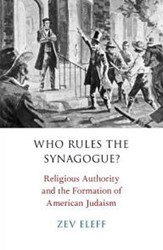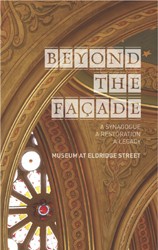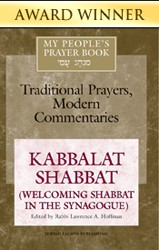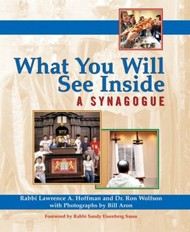In his book, The Synagogue in America: A Short History, Mark Lee Raphael has accomplished what seems like an impossible task, creating a short and comprehensive history of synagogues in America. Raphael draws on his exhaustive study of the archival records of approximately one hundred and twenty-five Jewish congregations, along with surveys, interviews, and other primary sources. It is a fascinating story of Jews in America told through the words of congregants, rabbis, cantors, and accounts of the period.
Shearith Israel, which appeared on a New York map in 1695, was the first documented synagogue building in colonial America. Discrepancies about date of origin of synagogues abound in synagogue archives. Raphael is a masterful researcher and ably sifts through conflicting reports to identify what appears to be the most accurate portrait of the period. Newport, Rhode Island’s Jeshuat Israel dates its beginning as 1658 and is thought to be the “first congregation” in colonial America. The synagogue later became known as “Touro,” the name of its first spiritual leader, Cantor Isaac Touro, a native of Holland, who was appointed in 1758.
Other colonial congregations in North America were Philadelphia’s Mikve Israel (1781), Congregation Mickve Israel of Savannah (1733), Beth Elohim of Charleston (1749), and Beth Shalome in Richmond, Virginia (1789). All six of these synagogues were Sephardic (Spanish-Portuguese) in their rituals and organization. Many of the congregations got money, members, and religious items from established Sephardic communities in England and Holland. Only the Touro Synagogue building still stands today.
The first half of the nineteenth century brought dramatic changes to synagogue life with the arrival of over 30,000 Central European Ashkenazi Jews. Customs changed and congregational antagonisms grew. Differences in minhag (ritual), such as those between Polish and German congregants, split congregations. For the first time in American history, there was more than one synagogue in a town. This pattern of the repeated splitting of congregations has continued in all branches into the twenty-first century. This also led to an increasing need for funds to create new synagogue buildings and to buy land for a cemetery. Sanctuary seats were sold, as were ritual honors, and appeals for donations became mainstays of synagogues.
Raphael identified still other dramatic changes in nineteenth century synagogue life. Synagogues started to “reform” themselves. The “reform” process did not mean they necessarily became part of the “Reform” denomination. More often it was a response to the new immigrants’ desires to become American and accepted by the larger community. Raphael suggests that this new emphasis may also have been a response to the nineteenth century emphasis on “beauty, dignity and order” leading to almost a “Protestantization” of Judaism. Synagogues developed constitutions which had bylaws mandating trustees to be committed to promoting “ order and decorum during divine services.” Worshipers were fined for leaving their seats or talking during worship and the sermon; some even prohibited children under six in the sanctuary during the prayer service. In all congregations women lacked any congregational voting rights and were only recognized as members of the ladies auxiliary, a fundraising group.
The second half of the nineteenth century also brought more radical changes. Reform Judaism was beginning in Germany and immigrants brought these beliefs with them to America. According to Raphael, classical Reform Judaism rejected “traditional Judaic belief in Divine revelation — that God revealed the Torah to Moses at Mt. Sinai” and rejected “the authority of Scripture, the commandments of the Torah, and even the ceremonies, customs, observances and rituals of the tradition.” Rabbi Isaac Mayer Wise, an activist Reform rabbi, arrived from Bohemia in 1848 and immediately began to institute Reform changes first in his congregation in Albany, New York and then his pulpit in Cincinnati. He traveled all over the country encouraging synagogues to adopt what he called “American Judaism.” He called a conference in Cleveland in 1873 out of which grew the Union of American {Reforming} Hebrew Congregations. By 1879 it had one hundred and five synagogues as members.
Changes in synagogues varied but the adoption of the Union Prayer Book, which severely truncated the liturgy in services, became “the mark of a full-fledged Reform congregation.” Some instituted far more radical measures, for example, adding instrumental music and a mixed choir to the prayer service, no longer calling men to the Torah, eliminating the women’s gallery, forbidding men to wear a prayer shawl, and dropping the mourner’s prayer (kaddish) during Sabbath services. Some congregants became concerned about the nature of the reforms taking place in their synagogues and split off to form more traditional synagogues which sought to “conserve” more of the traditional ritual. This was the beginning of the development of the “Conservative” stream of Judaism.
Still other great changes in synagogue life were in the offing in the 1880s. Great waves (over two million) of Eastern European Jewish immigrants began to settle in America and they brought with them a commitment to traditional Jewish Ashkenazi synagogue practice. There was an “explosion” of traditional synagogues as they sought to establish houses of worship that matched their religious practices. “Orthodox” immigrant synagogues appeared all over the nation wherever Jewish immigrants settled, including Atlanta, Minneapolis, and St. Louis. Some of their children brought still more changes as they split off from their parents’ immigrant “Orthodox” synagogues to form “Conservative” congregations that were more open to moderating traditional customs, ceremonies, and observances. Later generations would bring still other synagogue changes, including Reconstructionism and the development of different streams in the world of Orthodox Judaism.
Raphael has a storyteller’s talent and a scholar’s mastery of the subject. His vivid portraits of synagogue life and its many permutations and his respect for all aspects of Jewish congregational life make this book appealing to all readers who relish reading Jewish and American history. Bibliography, endnotes, index, photos.





